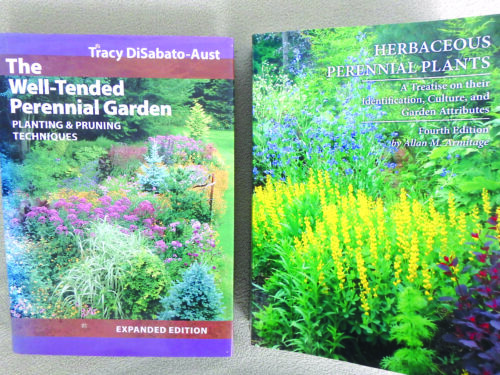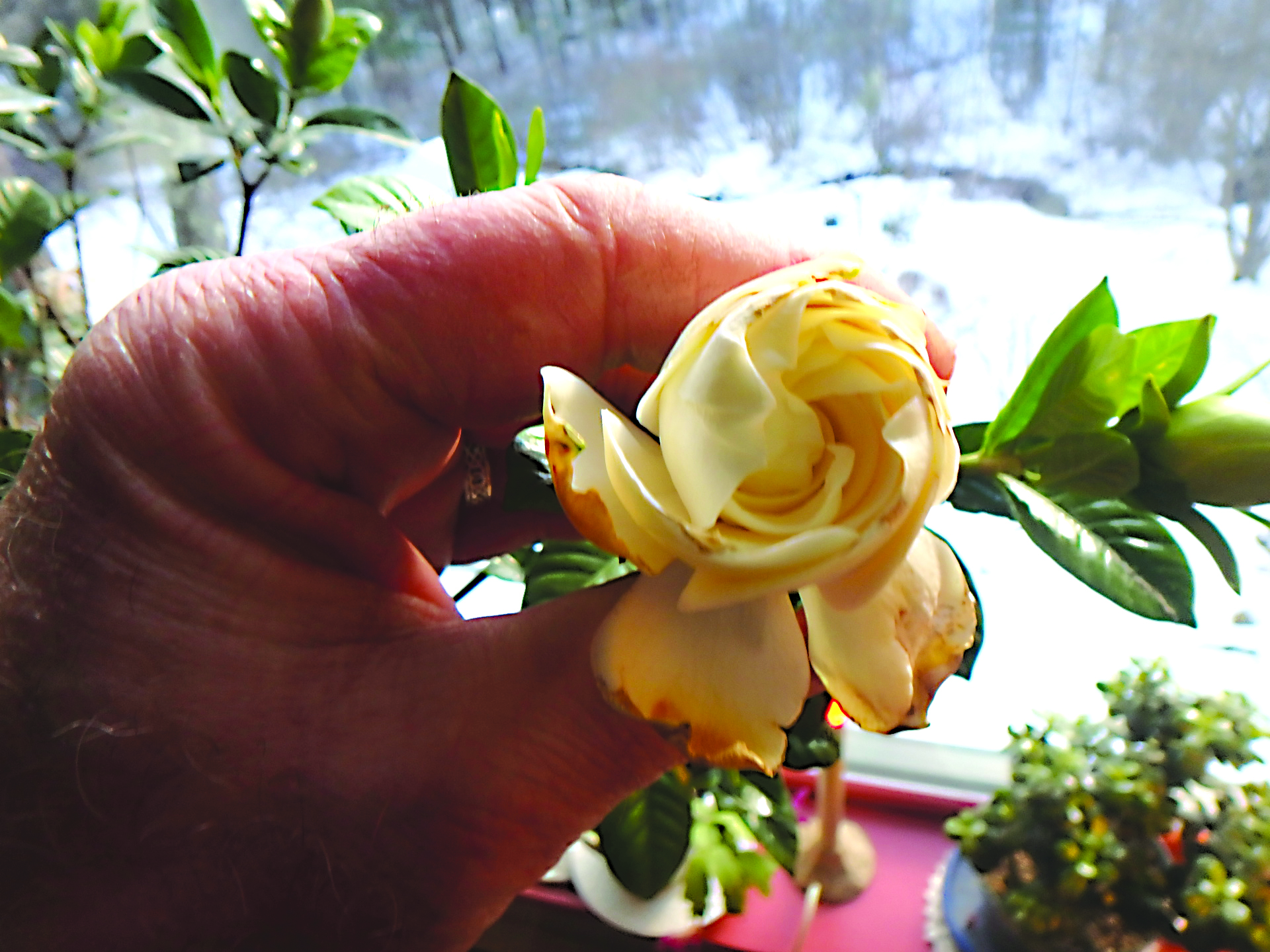The tales of puppies, sugar gliders, a potbelly pig and other animals that found new homes in the last year
With limited opportunities for human socialization over the past year, many New Hampshire residents have turned to companionship of the furry, feathered and scaly variety. Meet some of the animals who found their forever-homes during the pandemic.
Beauty and Beast
Beauty and Beast are two nearly one-year-old sugar gliders, mammals native to Australia that look like a cross between a small racoon and a flying squirrel. Sheila Sanville of Londonderry adopted the pair last September from the Raymond-based Our Sugar Gliders of New Hampshire, soon after moving into her new home.
Sanville had owned two other sugar gliders, named Tink and Simba, around a decade ago. In captivity, she said, they tend to live up to 10 to 12 years.
“My mother-in-law had a co-worker who needed a home for her sugar gliders, which is how I first got Tink and Simba. I had never heard of them before and I said I would love to know what they are all about,” she said.
She found Beauty and Beast (then known as Bambi and Thumper) from the Raymond rescue and sanctuary through Facebook.
“I work at a school and we were remote at the time,” she said. “I knew that I could give them more time and attention than I ever could have … to just make that bond with me.”
Sugar gliders can make good pets, just as long as you do your research. According to Sanville, they are nocturnal and have different diets depending on their age. State laws vary in the legality of keeping them as pets, although it is legal in most, including New Hampshire and Massachusetts.
“In the wild, you’ll find them at the tops of trees,” Sanville said. “They have skin under their arms and legs that helps them ‘glide’ from tree to tree.”
Coco
Derry couple Michael Pereira and Amy Wales had fostered several dogs from Second Chance Ranch Rescue in New Boston prior to adopting one themselves. After Solomon and Sadie, two dogs they had fostered who respectively were adopted into new homes in late 2019 and June 2020, Pereira and Wales met Coco (previously Vera), a 3- to 4-year-old black Lab pitbull mix who was introduced to them by Second Chance Ranch owner and founder Kristin Morrissey. “Kristin’s goal is really to find the right home that’s a good match for the dogs,” Pereira said. “We recently took guardianship of my wife’s cousin, who has special needs, and Coco has done incredibly well with her. … She’s also great with our kids.”
Vera, he said, was renamed Coco after the 2017 Disney film of the same name.
“From what we understand, she was a sweet caring and nurturing mother,” he said. “She loves hugs and will cuddle with anyone.”
Herbie
Ryan Moran never thought he’d get a pet bearded dragon. But when his sister Nicole, who works at the Manchester Animal Shelter, sent him a post on a dragon named Jackie Chan that was looking for a new home, he was intrigued.
“I thought he looked cool … [and] I’ve always been drawn to an animal with a funny name,” he said.
Moran had always had dogs in his family growing up. But with his landlord not allowing dogs in his apartment, and with Moran working from home more often during the pandemic, he became interested in the prospect of owning a new pet reptile. Jackie Chan was eventually renamed Herbie — Moran plays the piano and named him after pianist Herbie Hancock. Through online research and a visit with the veterinarian, he worked to educate himself on Herbie’s enclosure habitat, behavioral patterns and diet.
“Bearded dragons are omnivorous, so they’ll eat mostly leafy greens and different proteins,” Moran said. “He’s actually encouraged me to eat a little healthier and expand my own horizons.” Dragons, he said, also love natural sunlight and are drawn to windows.
“The cool thing is that he’ll change color,” he said. “Most of the time he’s a lighter tan color, [but] he turns a darker color to absorb more heat and he turns totally white when he’s sleeping.”
Iceberg Lettuce
Iceberg Lettuce, also known as Iceberg or “Icy” for short, is a 2-year-old female parakeet with light green feathers and a yellow head and tail. Thirteen-year-old Doc Willoya of Manchester received Iceberg as a birthday present last November from the MSPCA adoption center at Nevins Farm in Methuen, Mass.
Due to the pandemic, according to Willoya’s mother, Constance Spencer, they were required to make an appointment ahead of time to meet Iceberg.
“When we got there, we had to wait to be let in … and they escorted us straight to the bird room,” Spencer said.
Though Iceberg is currently recovering from an upper respiratory infection, she is a very musical bird.
“She just loves to chirp all day,” said Willoya, who also has another parakeet and a green-cheeked conure.
Also known as budgies, parakeets like Iceberg live for around 15 years and have a diet that includes pellets, seeds and chopped up vegetables.
JoeE
Katie Hall, her husband Chris and daughters Olivia and Lucy adopted this adorable 4-month-old Lab mix puppy late last month from Second Chance Ranch Rescue in New Boston. JoeE (pronounced “joey”) is named after the street the shelter is located on (Joe English Road) and is also short for Joe English Hill in New Boston, near where Chris’s parents still live. After the Hall family dog, Maple, passed away last fall at the age of 10, Katie said, searches for a new pup were made online via Petfinder to no avail.
“It was pretty limited in the midst of the pandemic,” she said. “It was hard to get a timely response from anyone.”
The Halls eventually learned of opportunities available at Second Chance Ranch Rescue, and met with potential adoptees in an outdoor fenced area on the property while masked up. JoeE was one of at least three littermates the family visited.
“Part of our inspiration to get a puppy was for the kids to have those childhood memories and adventures,” Hall said.
JoeE has adapted to his new home very quickly — you just can’t leave him unsupervised, Hall said, or he’ll try to chew on a glove, mitten or shoe.
Kane
Kane is a 2-year-old medically needy American Staffordshire terrier who found his new home in late January. Chris Garceau of Windham came across an online post about Kane from the Animal Rescue League of New Hampshire in Bedford.
A pet owner for three decades, Garceau has adopted several other animals with medical conditions in the past. He most recently had a 13-year-old springer spaniel with canine cognitive dysfunction named Lexi; she passed away last September.
“I didn’t want to see a dog like Kane end up with a family that couldn’t afford his care,” said Garceau, who noted that Kane is on multiple medications for food and skin allergies.
Garceau also has two cats, Dezzy and Tyna, who came from Pope Memorial SPCA in Concord, and reports that Kane has settled in with his new furry housemates seamlessly.
Oakley
Oakley is a sweet 12-week-old female Lab mix who came all the way from Puerto Rico. Melissa Magee of Sandown and her family adopted Oakley in late January from The Student Rescue Project, a Vermont-based volunteer-run organization that rescues stray and abandoned dogs from the U.S. territory. Once she received her vet clearances, she was to be flown into Boston to be picked up by the rescue.
“Covid caused so many delays and forced schedule changes so the flights had to be rebooked more than once,” Magee said in an email. “Because of this, Oakley and the rest of the dogs with her ultimately traveled for two days from Puerto Rico to Baltimore, New York City and Philadelphia before being driven to Connecticut, and finally to Vermont.”
The pandemic, she said, also made the pickup process very quick and informal.
“We had to stay in our vehicle, with masks on, and have our puppy brought out to us,” she said. “There was a quick handoff, details about receiving her paperwork, and then we were off.” Despite the initial scheduling hiccups, Magee said the young pup has quickly acclimated to her new home and bonded with the family’s 2- and 4-year-old sons and their other rescue dog, an English shepherd and Great Pyrenees mix named Pooh Bear.
Scarlett
Christine Kay of Merrimack brought this 9-year-old senior cat home earlier this month. A retired teacher, Kay had another cat that passed away about three years ago and had thought about adopting again.
“I came across Scarlett online and really liked her,” she said. “I had no other pets, just me, and now of course we can’t travel … so I thought she might be a good fit.”
Kay said she was so excited to meet Scarlett that she drove to the Animal Rescue League of New Hampshire in Bedford in a snowstorm. Scarlett, in turn, jumped on her lap almost immediately. “[The Rescue League’s] website says you can take the animal home the same day, and I left the little carrying cases outside the room hoping that that would happen,” she said.
In addition to some upper respiratory challenges, Scarlett has had several of her teeth removed and is a very fussy eater, oftentimes not touching her food in the morning.
“They were very up front about everything that needed to be done,” Kay said, “and I thought, ‘you know what, I can handle this.’ I don’t mind, because she’s worth it.”
Zazu
Named after the character from The Lion King, Zazu is a 3- or 4-month-old black and white domestic shorthair kitten. Londonderry native and University of New Hampshire student Saba Awan had gone fully remote with her classes and wanted a new pet kitten. She found Zazu late last year.
“I had nothing to do and we were all home anyway, so we knew he was always going to have somebody around,” Awan said. “He settled in pretty much immediately. … He could fit in my hand when we first got him. He’s a little bit bigger now but not by much.”
Banana
Kim Caddle of Stratham adopted 2-year-old male pup Banana from the New Hampshire SPCA last June.
“We had fostered a few dogs for the last couple of years and knew it was time for our family to get a forever dog again,” she said.
When the NHSPCA first brought Banana out to meet Caddle and her family, he was “smiling from ear to ear,” she said, and the connection was instant.
“As soon as he approached my 8-year-old son, he reached up and covered his face in kisses,” she said. “That sealed the deal.”
Caddle said Banana is “the friendliest goofball” who is full of energy but also loves downtime with lots of cuddles.
During the pandemic he has made friends with the neighborhood kids and has become the “mascot,” Caddle said, for the pod classroom of third-graders who meet at her home.
“Everyone on Zoom knows who he is,” she said.
Jimmy
Wife and husband Alison and Mark Langlois of Goshen had been looking for a companion pig to join the other rescue pigs and animals on their hobby farm, so when 8-year-old potbellied pig Jimmy became available at the New Hampshire SPCA, they applied right away.
“One look at his photo online stole my heart, but even more so when I arrived and saw him basking in the sun next to his duck friends,” Alison Langlois said. “He was pure joy from the first moment.”
When they brought Jimmy home from the New Hampshire SPCA a few weeks ago — a two-hour car ride in an SUV — they tried to have him ride in the back of the hatchback trunk, but he was “having none of that,” Langlois said.
“[He] opted instead to climb up next to me in the back seat and ride the rest of the way like a human,” she said.
In the short time that Jimmy has been at his new home, Langlois said he fits right in and has already made friends with one of the sheep on the farm.
“It’s heartwarming to watch these beloved animals interact,” she said.
Bennie and Charlie
Wife and husband Lisa and Scott Hunt of Hillsborough already had two hound rescues and weren’t planning to adopt any more dogs, but when they saw a post on Facebook featuring 12-year-old puggle pair Ben and Charlie, who had been left at the Manchester Animal Shelter, they found it hard to look away.
“We knew we had to go meet them,” Lisa Hunt said. “The minute we met them, it was love at first sight. … We [applied] and prayed that we would be chosen to give these boys the best last years of their lives.”
Charlie is “Mr. Personality,” Hunt said — very vocal and loves to play with his toys and roll around on the floor — while Bennie is “cooler than the other side of the pillow” and loves his nap times.
“They are both sweet, funny, loving and just pure goodness,” she said. “They are both very spunky too. You would never know they are little old men.”
Their favorite part of the day, Hunt said, is their morning Dunkin run.
“We pile [all the dogs] into the car … [to get] our iced coffees and their doughnuts,” she said. “Everyone [at Dunks] knows them, and they love the attention from their doughnut friends.”
Hunt said the dogs have brought her family “instant peace and feelings of love” throughout the pandemic.
“I think about how lucky our family is to have these sweet boys by our side during the toughest times we have ever faced,” she said. “Who is luckier, us or them?”
Baby
Having lived her first year as a feral dog on the streets of Georgia, Baby was in need of a foster home with another dog who could help her learn how to live domestically. Wife and husband Shannon and Nate Sprague of Pelham, who heard about Baby through a post on the Greater Derry Humane Society’s Facebook page, felt that they and their dog George would be able to fulfill that need, but then something happened that they did not expect.
“We took her in to foster … and she never left,” Shannon Sprague said. “We fell in love with her … and couldn’t imagine living without her.”
Baby has come a long way since they made the adoption official last March, Sprague said. At first Baby was petrified of people and wouldn’t step outside of her crate or let anyone touch her. Now she loves snuggling, hiking and going for car rides with the family.
“George took her under his wing and truly taught her how to live in a home with people and other animals,” Sprague said. “She has transformed into a completely different dog. … We can hardly believe it.”
Sprague said Baby has been a source of comfort for the family during the pandemic, especially for Sprague’s 15-year-old daughter, Gwyneth.
“Gwyn is an extremely social teenager and has been hit hard emotionally at times due to the pandemic,” Sprague said. “Baby has rescued her as much as she rescued Baby. They are smitten with each other.”
Sugar
Katie LeBeau works at the Nashua Humane Society for Greater Nashua. It was there that she first met Sugar, a 13-year-old cat who was up for adoption.
“It was love at first sight,” LeBeau said. “I would care for her every day, and we developed a bond while she was waiting to be adopted.”
LeBeau said she thought about adopting Sugar every day but was hesitant because she had another cat at home and wasn’t sure how the two would get along. One day LeBeau came in to work to find that Sugar had been adopted.
“I was happy she had found a home, but heartbroken at the same time,” she said.
The adoption did not work out, however, and Sugar returned to the shelter shortly after. This time LeBeau didn’t hesitate.
“I just knew I could not let her go again, so I adopted her as soon as I could,” she said.
Fortunately, LeBeau said, Sugar and LeBeau’s other cat, Simba, get along great.
“They are very happy together,” she said. “They act like they have lived together their whole lives.”
Rue
Last December, Heather Mills of Nashua agreed to foster Rue, a 3-month-old Chihuahua mix up for adoption at the Humane Society for Greater Nashua, while the puppy was being medicated for anaplasma, a tick-borne disease.
“The shelter felt it would be best for her to go into a home setting instead of sitting in a shelter while on the medication to receive socialization that is so important at a young age,” Mills said.
Mills, who had just adopted a kitten a month before, had no intention of adopting another animal, but when Rue and the kitten “fell in love right away,” she started to reconsider.
“As the month went on I kept telling myself, ‘No, I don’t want a puppy,’” she said. “In the end I just could not part with her. … It was just meant to be.”
Mills said Rue is affectionate, loves people and is “the ideal lap dog,” and has been a comfort to Mills’ daughter, who was a college student when the pandemic hit.
“She is going through some depression like so many other young adults,” Mills said, “but [Rue] just brings a light into our home [and] brings both myself and my daughter so much joy.”
Juneau
Wife and husband Donna and Eric Long of Bradford had been considering getting a dog after their 14-year-old Labrador retriever died in 2019. When the pandemic hit, they decided to not put it off any longer.
“My husband and I were both working from home, [so] we figured it would be a good time to train a puppy,” Donna Long said.
In September they adopted Juneau, a 9-week-old Siberian husky, Labrador retriever and boxer mix, from Pope Memorial SPCA in Concord.
“We put in an application for a puppy, and we were matched up with her,” Long said. “We visited with her for a bit … and she stole our heart immediately.”
Long said they are always looking for ways for Juneau to engage with other people and dogs in hopes of preventing separation anxiety if and when the couple returns to working outside of the home.
Juneau has even had the unique opportunity of getting to know her biological siblings thanks to the owner of one of the siblings, who proposed that they all keep in touch. The group has connected eight out of the 10 adopted puppies from Juneau’s litter, occasionally getting together for playdates, sharing pics and keeping each other updated on the pups’ weights and developing personality traits.
“It usually takes a few moments [for the puppies] to remember who they are [during the playdates], but then they are so happy to play together,” Long said. “It is fun to watch all the siblings grow up together.”
Prosecco
Katie Boyden met 9-year-old cat Prosecco at the Humane Society for Greater Nashua, where she works as the director of community engagement.
“I would visit her kennel and she would meow and come right up to me,” Boyden said. “I knew from the moment I met her that our personalities were meant to be.”
Boyden said she had no intention of adopting an animal during the pandemic, but after seeing a promotional video the Humane Society made with Prosecco giving a “shelter tour,” she couldn’t resist.
“It stole my heart. … I fell in love immediately,” she said. “When I saw she was still available the next day, I adopted her.”
Prosecco loves snuggles, french fries and accompanying Boyden to work in her “adventure backpack,” Boyden said, but most of all she loves to be the center of attention, especially on Zoom calls.
“She sits front and center in front of the camera whenever I Zoom,” she said. “She has become well-known around Greater Nashua; anyone who has Zoomed with me has gotten to know my beautiful cat.”
Featured photo: (left to right) Beauty and Beast. Photo courtesy of Sheila Sanville. Coco. Photo courtesy of Michael Pereira and Amy Wales. Herbie. Photo courtesy of Ryan Moran. Icy. Photo courtesy of Doc Willoya and Constance Spencer. JoeE. Photo courtesy of Katie Hall. Kane. Photo courtesy of Chris Garceau. Oakley (right) and Pooh Bear. Photo courtesy of Melissa Magee. Scarlett. Photo courtesy of Christine Kay. Zazu. Photo courtesy of Saba Awan. Banana. Photo courtesy of Kim Caddle. Jimmy. Photo courtesy of Alison and Mark Langlois. Bennie and Charlie. Photo courtesy of Lisa and Scott Hunt. Baby. Photo courtesy of Shannon and Nate Sprague. Sugar. Photo courtesy of Katie LeBeau. Rue. Photo courtesy of Heather Mills. Juneau. Photo courtesy of Donna and Eric Long. Prosecco. Photo courtesy of Katie Boyden.






